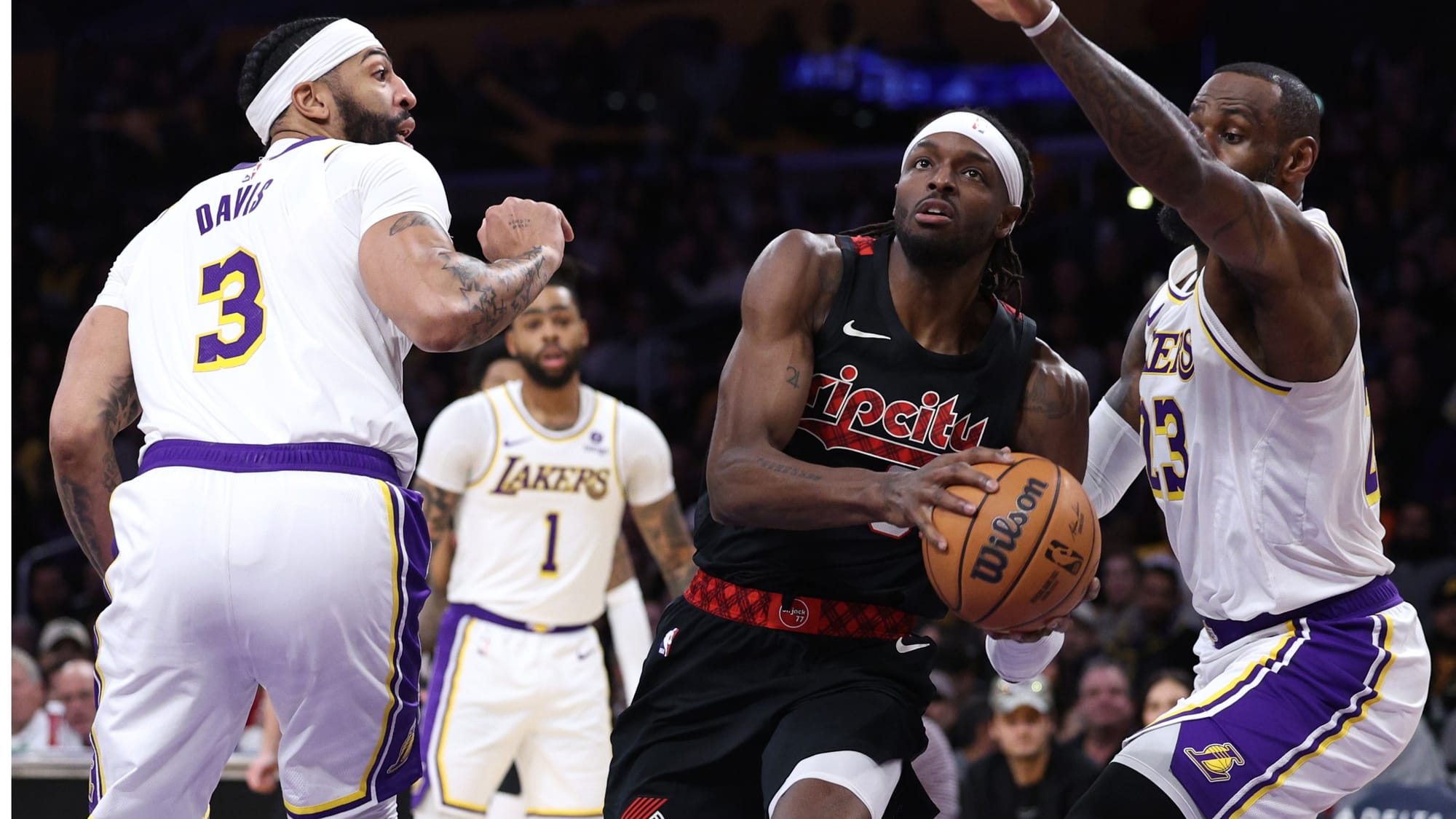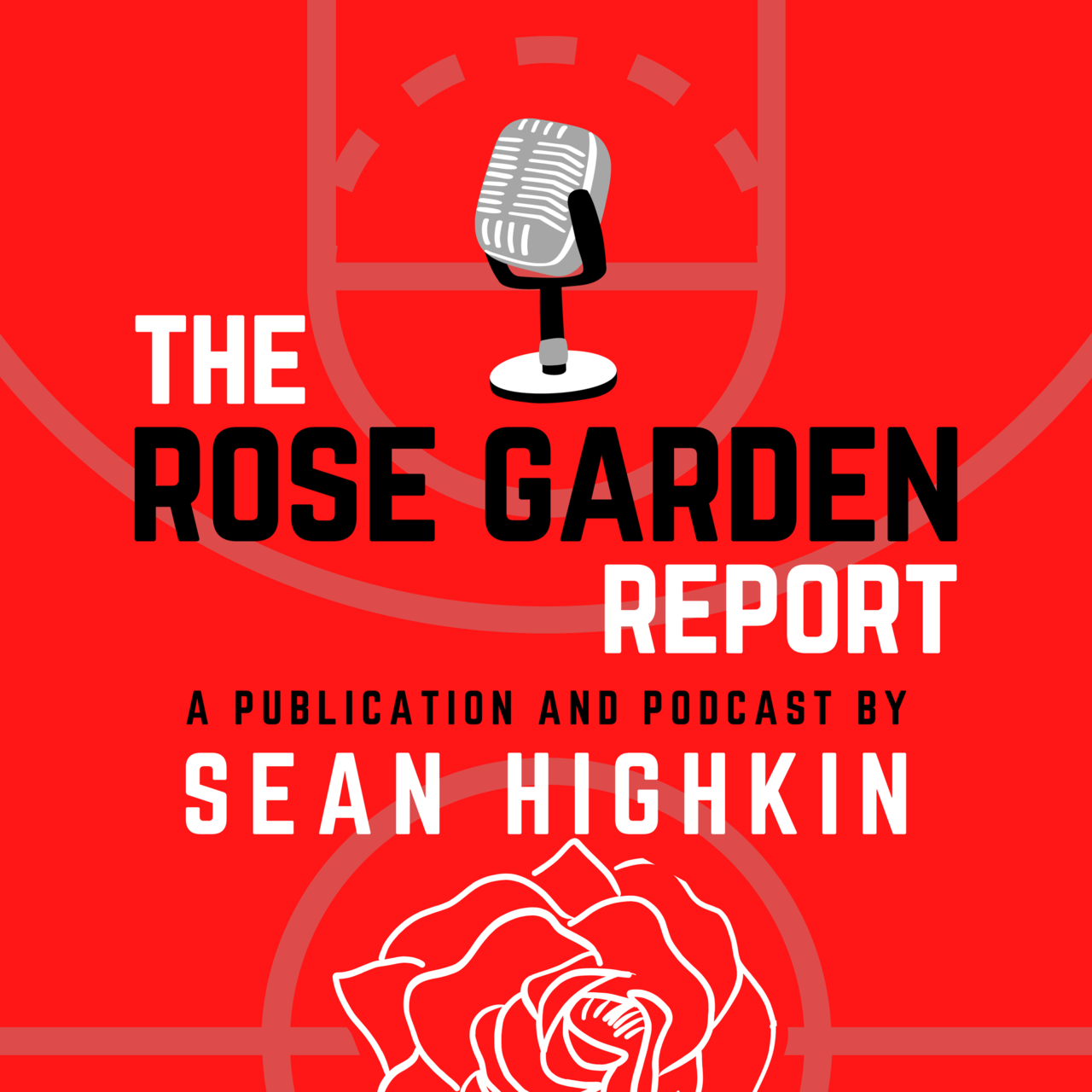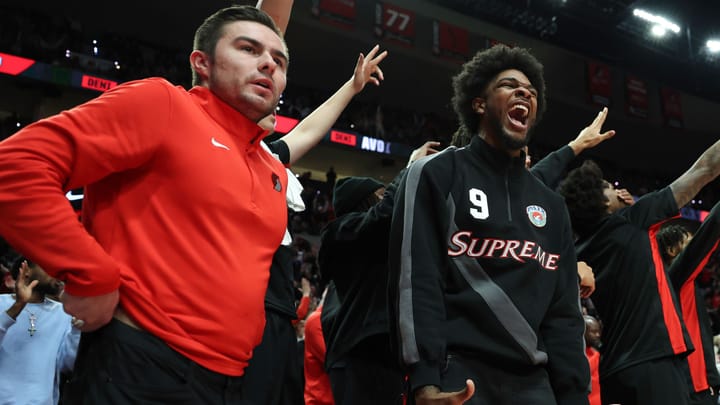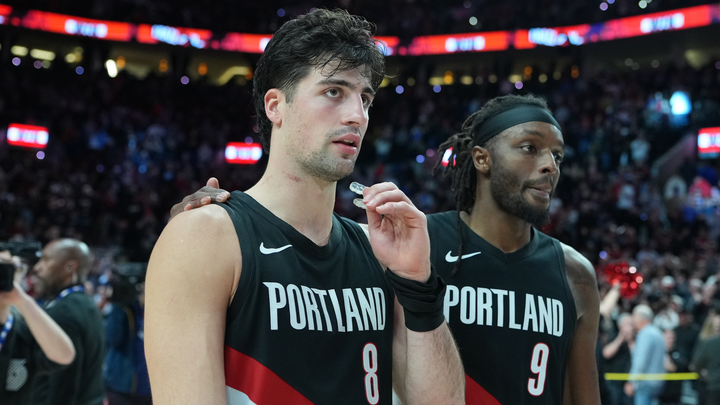Trail Blazers' Rebuild Comes as CBA Reshapes NBA Roster-Building Strategy
The way NBA teams do business is changing rapidly. Here's how that could affect Portland in the coming years.

Outside of drafting Donovan Clingan and trading for Deni Avdija, it’s been a quiet summer for the Trail Blazers.
They’re not the only ones.
As NBA teams adjust in real time to the salary and roster-building rules of the new collective-bargaining agreement that went into effect last summer, the league’s norms are changing when it comes to trades and free agency.
This summer, after a one-year grace period, the highly restrictive new luxury-tax system is being introduced. My friend and colleague Jake Fischer of Yahoo Sports has a more thorough explanation of the rules here, but in short, teams that spend over a certain threshold are severely limited in being able to do things like trade multiple players for one player or sign any free agents for more than the minimum, and in some cases even have future draft picks frozen.
A few teams like Boston, Phoenix and Milwaukee have gone over that line and seem willing to live with the consequences, but for the most part, front offices are going out of their way to avoid it, and it’s had a far-reaching effect on what kinds of trades and free-agent signings teams are willing to do.

It’s going to take several years for everyone to truly grasp the effects of the new system, but the early verdict: owners have effectively gotten the hard cap they’ve wanted for almost 30 years.
It’s certainly an interesting time for a team like the Blazers to be rebuilding.
Now that we’ve seen most of an offseason with the new rules in place, there are a few conclusions we can draw about where the Blazers stand, and how the realities of the new CBA could impact them—and the rest of the league—going forward.
Fortunate timing for the rebuild

The Damian Lillard trade took the entirety of last offseason for Joe Cronin to put together because it was difficult to find a team that a) saw Lillard as the missing piece to a championship; b) was willing to roll the dice that he’d be amenable to playing there despite not being Miami, his preferred team that didn’t have any trade pieces the Blazers were interested in; c) had the matching salary and draft assets to be able to actually get a deal done; and d) most crucially, wasn’t scared off by the four years remaining on his contract that will pay him $58 million at age 36.
In Milwaukee, the Blazers eventually found a team that checked all of those boxes and in the end, after looping in Phoenix and flipping Jrue Holiday to Boston, did very well in the final trade return for the franchise’s all-time leading scorer.
A year later, as exhausting as last summer was for everyone involved—Lillard, Cronin, fans, beat writers, team employees—it’s clear that the Blazers are fortunate the long-running will-they-or-won’t-they breaking situation with Lillard came to a head when it did and not a moment later.
The return the Blazers got for Lillard (as of today, after the trade with Washington that involved Malcolm Brogdon and one of the picks they got from the Celtics for Holiday, the tally stands at Deandre Ayton, Toumani Camara, Robert Williams III, Avdija and unprotected picks and swaps from the Bucks in 2028, 2029 and 2030) may end up being the last gasp of the days when teams could get that kind of haul for a star on a big contract, especially a guard with a bad defensive reputation.
Looking at the big names on the trade market this summer, those kinds of packages aren’t out there, even for All-Stars. The Hawks traded Dejounte Murray to New Orleans for significantly less than they gave up for him two years ago. They’d love to move on from Trae Young, too, but the market isn’t there. Brandon Ingram is very available, and the Pelicans are finding there isn’t a long list of teams eager to give up assets for a low-end All-Star going into a contract year. The Bulls will need to attach draft picks to get a team to take Zach LaVine, and even then they might not be able to.
Lillard is a better player than all of those guys, but the age, salary, size and health concerns with him are legitimate. If they had strung this out another year and were looking to move him this summer, they wouldn’t have gotten anything close to what they got for him last year. The collection of assets from Miami that was so unappealing last year when Lillard and his representatives were attempting to force him there may have legitimately been the best Cronin could do this summer.
The messy, public divorce between Lillard and the Blazers is still a sore subject for many fans and people in the organization. But in hindsight, things worked out well for the Blazers that it happened when it did.
Value of draft picks
Leading up to last year’s draft, when the Blazers held the No. 3 overall pick and were weighing whether to use it or trade it for veteran help for Lillard, the thinking that ultimately won out was this: under the new CBA, with these tax penalties having a wide-ranging impact on roster-building rules, the ability to have a high-end lottery talent under contract for four years at a below-market salary is too valuable to pass up.
San Antonio paid Victor Wembanyama $12.1 million last season, and will pay him $12.7 million this year, $13.3 million next year and $16.8 million the following year. After that, they’ll have to pay him what he’s actually worth on his first max extension, but until then, they have someone who might become the best player in the NBA before that rookie contract is over for less money than the Bulls are paying Patrick Williams per year.
It remains to be seen whether the player the Blazers ultimately drafted with the third pick last year, Scoot Henderson, ends up being a franchise cornerstone. His rookie season was decidedly uneven, but he ended on a high note and many in the organization are still optimistic about his future. They have three years before they really have to make that decision. They also have two more years of team control for Shaedon Sharpe. Clingan will be making less than $10 million per year for the first four seasons of his career. If they win next year’s lottery, they’ll have Cooper Flagg for four years at a similarly low number.
This has always been true, that newly drafted players make less than established stars. But with the new rules making it more difficult for teams with highly paid stars to improve their rosters or keep important role players, it’s more important than ever to a) have draft picks to acquire cheap talent, and b) to hit on those picks when you have them.
We’re starting to see teams realize this and become less willing to trade a lot of draft picks in blockbuster deals. The kind of hauls of picks that Brooklyn got for Kevin Durant, or that Utah got for Rudy Gobert and Donovan Mitchell, are probably a thing of the past. These picks, especially in the next two drafts, are simply going to be too valuable to give up in most cases.
(The Knicks’ trade for Mikal Bridges, in which they sent five picks and a swap to Brooklyn, is an outlier and an exceptional set of circumstances, a trade between one franchise that was eager to start a rebuild and another that was firmly set on building a win-now roster and happened to already be centered around three of Bridges’ former Villanova teammates. It’s not going to be the norm going forward.)
Max extensions not as automatic

For at least a decade, it’s been assumed that every team will give the best young player they drafted in the top 10 a max or near-max extension when they’re eligible, regardless of whether they’ve actually produced at that level or not. Andrew Wiggins got one from Minnesota, Darius Garland got one from Cleveland and LaMelo Ball got one from Charlotte. It’s just what teams do and have done for years if they think a player they drafted might have a chance to become the face of their future.
In four cases at the top of the 2021 draft class—Detroit’s Cade Cunningham, Cleveland’s Evan Mobley, Toronto’s Scottie Barnes and Orlando’s Franz Wagner—that has held true. In all four of those cases, there are legitimate arguments that those four players will be worth those max deals and also legitimate downside risk. None of them are Jayson Tatum, Anthony Edwards or Luka Doncic, no-brainer franchise cornerstones that no team would think twice about giving as much money as possible as soon as possible.
I wonder if all four of those players from the 2021 class would still get that money a year from now. I also wonder if, say, the Nuggets would have maxed out Jamal Murray in 2018 if the current second-apron rule had existed at the time. They certainly wouldn’t have with Michael Porter Jr.
The Blazers are a year away from having to worry about that decision with any of their core players. Next summer, the 2022 draft class becomes extension-eligible, and three players already feel like locks to get the rookie max or close to it: Orlando’s Paolo Banchero and Oklahoma City’s Chet Holmgren and Jalen Williams.
Will Shaedon Sharpe also be in line for a $200 million-plus extension?
Five years ago, if Sharpe stayed healthy this coming season and had the kind of year he appeared to be having before the February core-muscle surgery ended his season, he’d be very likely to get a max extension. Now, I’m not so sure.
With so few teams having cap space to sign restricted free agents to offer sheets, and tax penalties being so much more punitive now than they were before, players from the 2022 draft class like Sharpe, Jabari Smith Jr., Keegan Murray and Jalen Duren, all of whom fall into the broad category of “very promising young players with a lot of upside who haven’t yet proven themselves as no-brainer franchise guys” may be forced to either extend at a below-max number or wait until restricted free agency.
There’s a mitigating factor here: as the luxury-tax rules become more restrictive, the sheer amount of money coming into the league is about to explode. Next summer, the league will enter into an 11-year, $76 billion national TV deal with ESPN, NBC and (probably) Amazon, roughly triple the value of the last TV deal that went into effect in 2016. Under the new CBA, salary-cap increases are limited to 10 percent every year with the rest of the money going into escrow, to prevent a situation like the one-time cap spike of 2016 that allowed the Warriors to sign Kevin Durant. But with so much more money coming into the league, it’s very likely the cap goes up by that maximum of 10 percent every year.
That means that even a salary that’s seen as a “discount” from a player’s max could still be enough to get guys to sign. Jalen Brunson’s decision earlier this month to sign a four-year, $156 million extension with the Knicks rather than wait a year and sign for five years and $269 million was polarizing, because not many players are willing to sign deals that team-friendly. But let this part not be forgotten: even in taking less, Brunson is still banking 156 million dollars. It’s not like he extended at the midlevel to help the Knicks out.
As the money coming into the NBA continues to skyrocket, I wonder if more players will make similar decisions if it means being able to keep good teams together. I am not, and have never been, someone to advocate for the players, who people pay to see and who keep the entire business afloat, to not make as much money as they possibly can. I just wouldn’t be surprised if the total amount of money in the pool for players gets to such a level that it’s no longer a max-or-nothing proposition.
The players at the very top of the food chain—the Tatums, Doncics, Wembanyamas, etc.—are always going to get the absolute most money teams are legally allowed to give them, because teams’ ability to compete for a title is dependent on having, and keeping, one of those guys. But we could be entering an age where the max contracts are reserved for those players, and everyone below them—even All-Star-caliber players—get a little bit less.
The Blazers, as of now, don’t have one of those foundational franchise players. If all goes according to plan, they will in a year if they win the Flagg lottery. Until then, it will be interesting to see how their next round of contract negotiations go with the players they’re currently building around.
For now, they’re still figuring it out, just like everyone else.





Comments ()